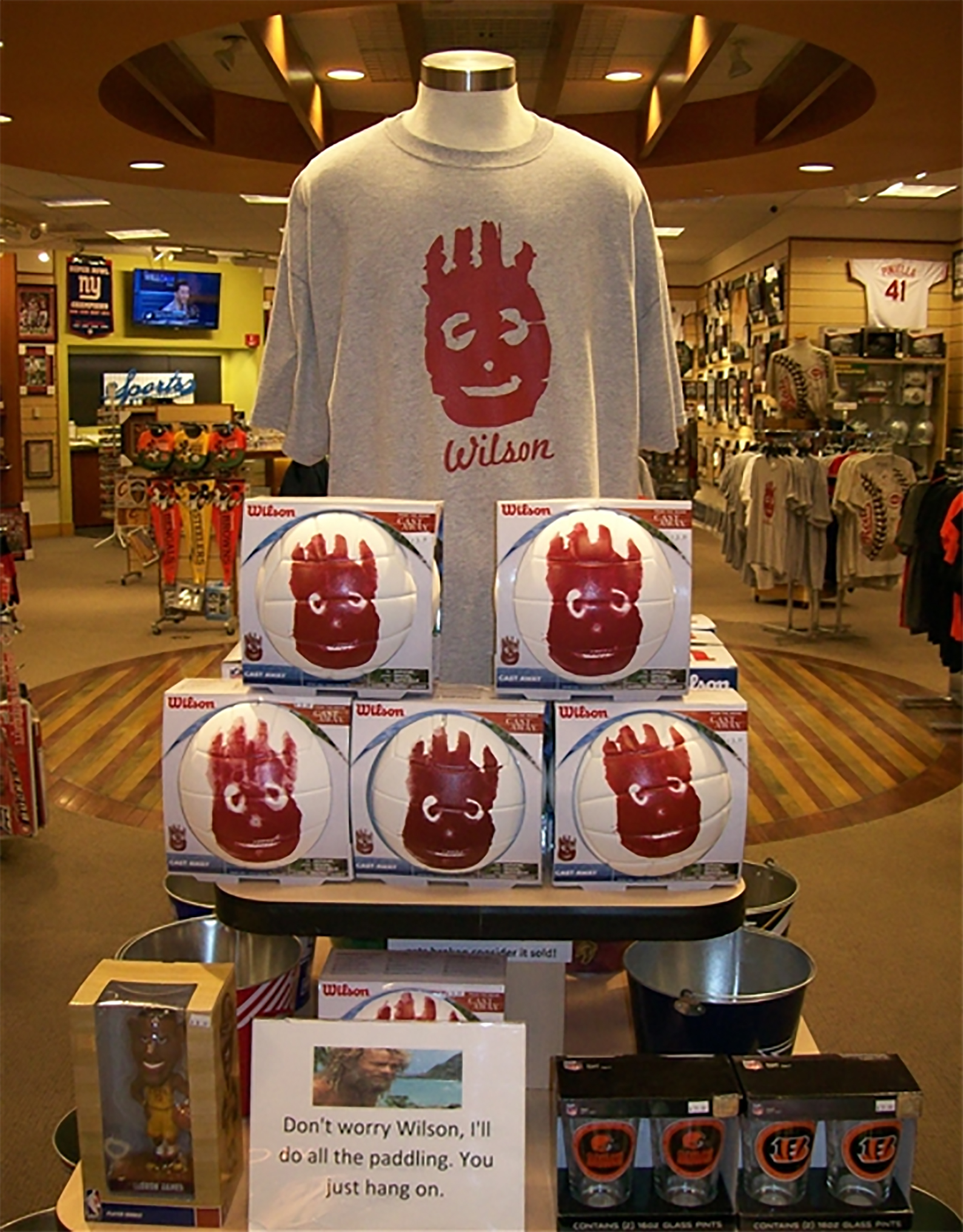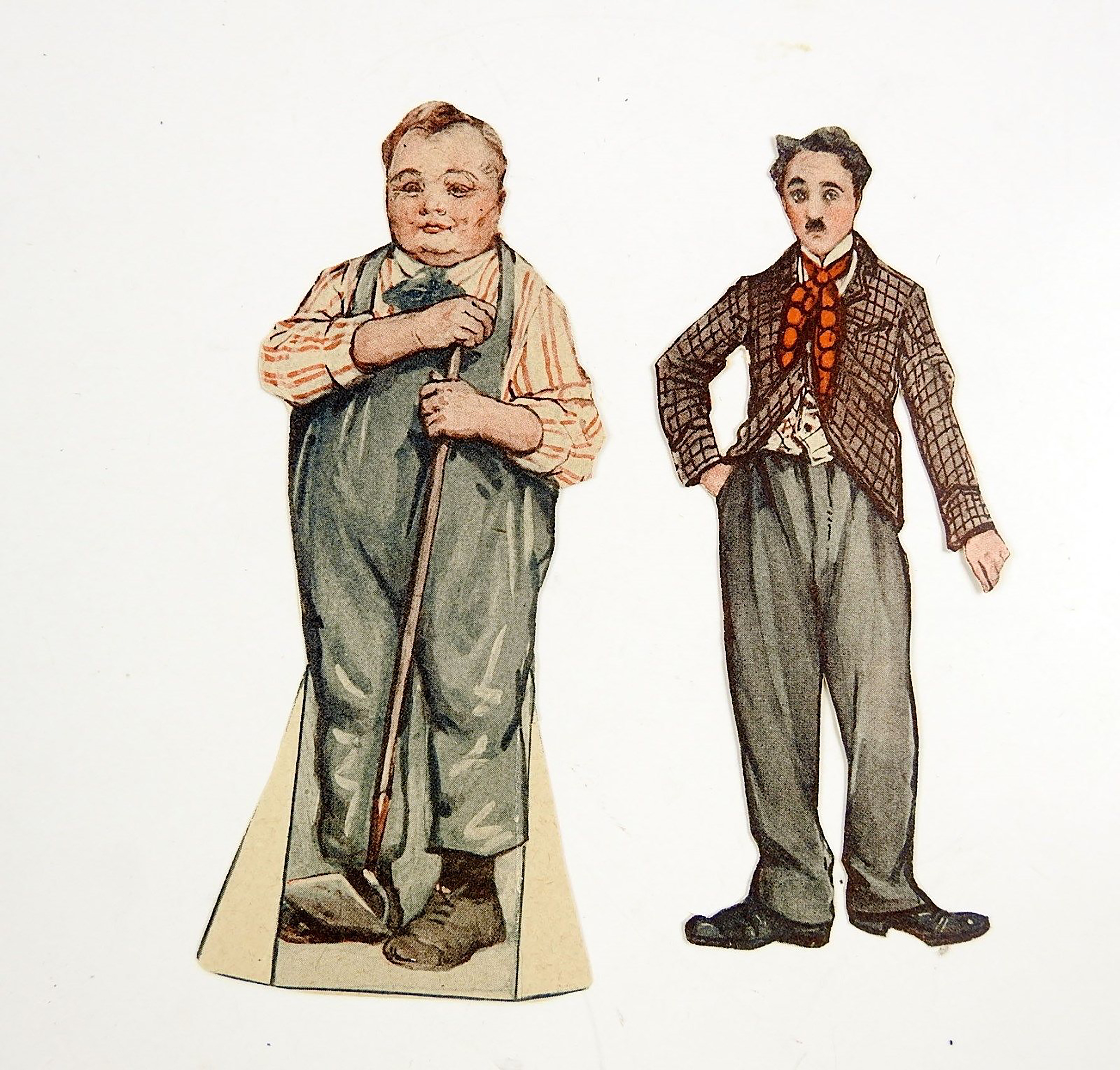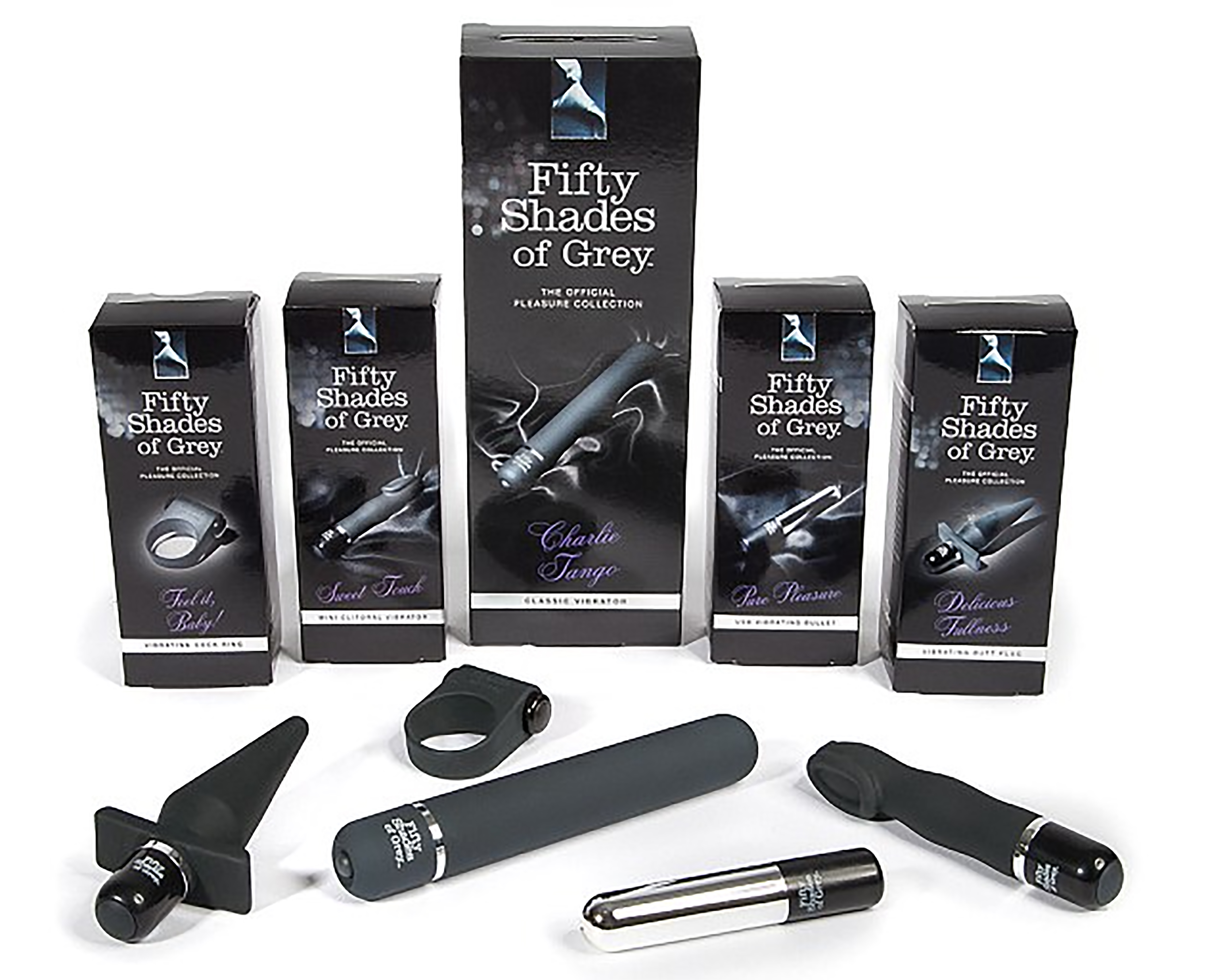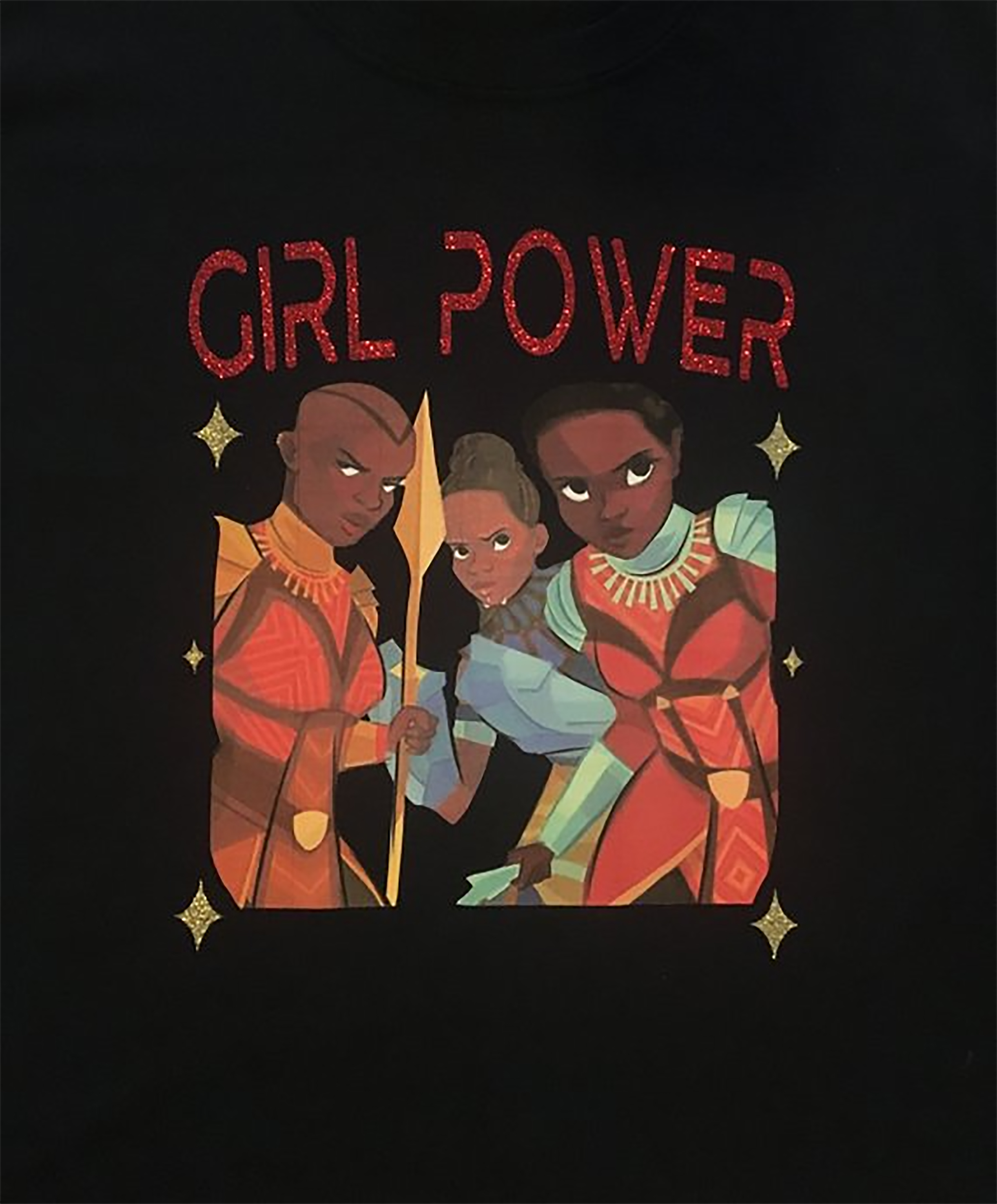Mediated Merchandise, Merchandisable Media: An Introduction
Skip other details (including permanent urls, DOI, citation information)
: This work is licensed under a Creative Commons Attribution-NonCommercial-NoDerivatives 4.0 International License. Please contact [email protected] to use this work in a way not covered by the license.
For more information, read Michigan Publishing's access and usage policy.
The Business of Merchandise
There are many reasons why film and media scholars ought to take merchandise seriously. That film-related merchandise is a lucrative part of the film business is only a starting point, but still a good place to start. In 2018, character and entertainment licensing accounted for 44.7% of retail sales of licensed merchandise, generating $121.53 billion in sales.[1] This earned entertainment companies approximately $6.2 billion in royalties.[2] Not surprisingly, five of the top ten licensors are entertainment companies, with Disney positioned at the top with $53 billion in merchandise sales. Universal Studios is ranked 4th ($7.3 billion), Hasbro 5th ($7.1 billion), Warner Brothers 7th ($7 billion), and Nickelodeon 9th ($5.5 billion). All of the major film studios are ranked in the top 150: 21st Century Fox is 41st, Sony 87th, and Paramount 114th.[3]
Of note is the inclusion of Hasbro on this list. Traditionally a toy company that licensed the rights to manufacture film-related playthings, Hasbro along with competitors Mattel, LEGO, and MGA Entertainment have all rebranded themselves in the past decade as entertainment companies. Hasbro and Mattel operate their own studios that produce content based on their properties (Transformers, G.I. Joe, Barbie, Hot Wheels), which not only promote their toy lines but also cultivate a deeper investment among consumers in their brands. This reorganization of toy companies into media companies speaks to the ways that merchandise operates as part of larger cultural structures that indoctrinate children into consumer culture and place merchandise into larger contexts of education, parenting values, access to material goods and media technology as Marsha Kinder and Ellen Seiter have both noted in their work on kids’ media cultures.[4] Film merchandise often reflects larger trends within retail, and in keeping with retail trends that opt for a multi-channel approach, it is not just manufacturers who are entering the film industry but retailers as well.[5] Derek Johnson’s essay in this collection focuses on Amazon Studios and the online retailer’s approach to merchandising and selling products based on its own productions. While it might be tempting to see the increased significance of licensed merchandise as a phenomenon directly connected to media conglomeration in the late 1980s and the rise of blockbuster cinema and tent-pole films that support larger multimedia franchises, the importance of merchandise to the business of making films is hardly new.

Historical Approaches
There is a long history of synergistic interdependence between Hollywood, product manufacturers, and retailers, including a sub-genre of films set in fictional and real department stores including, It (1927) and the fictional Waltham’s, Shop Around the Corner (1940) and the fictional Matuschek and Company, Miracle on 34th Street (1947) and Macy’s, Career Opportunity (1991) and Target, and The 40-Year Old Virgin (2005) and the Best Buy-esque SmartTech. Many films use branded merchandise as important props and plot devices, such as E.T. The Extra-Terrestrial (1982) and Reese’s Pieces, Castaway (2000) and Wilson Volleyballs, and the James Bond franchise and Aston Martin cars. Many of these objects serve to tell us about character, as Temitope Abisoye Noah’s essay in this issue addresses through the use of Titus Sardines as a recurring trope in the short film Beento (2007). And, of course, there are a slew of films that bring branded objects to life (Raggedy Ann & Raggedy Andy (1941), Clue (1985), The Transformers: The Movie (1986), Toy Story (1995)). These are merely examples where retail and branded merchandise (as opposed to generic products) held prominent roles in a film’s plot. Product placement can be traced back as far as the Buster Keaton and Fatty Arbuckle film, The Garage (1920), which featured signs for Red Crown Gasoline on the back walls of the set of the fictional car shop. The move was criticized at the time and indeed product placement remains a controversial subject among film critics and scholars.[6] Importantly, these tensions are often felt within the industry as well, where potential profits from product integration and merchandising must be balanced, at least rhetorically, with ensuring that audiences don’t feel devalued by the experience. Several contributions to this special issue explicitly and implicitly address industry efforts to align value with values in its embrace of merchandising, either by expressing an appropriate (if likely disingenuous) “reluctance” or by claiming to respond to consumer wants and needs, including the use of merchandise as a form commodity activism that helps rally consumers around a particular media brand.

Discussions of merchandise have long existed in film and media studies, with both fields invested in how merchandise operates in relationship to gender, class, spectatorship, and business imperatives. Studies of merchandise within both disciplines are often part of a broader analysis of moving image media's relationship to broader cultural-economic trends such as consumer culture, branding, and capitalism. Within film studies, merchandise has often been written about in relationship to moving image media's connection to 20th century consumer cultures, linking movie theaters to department stores as sites of modern spectacle. Jane Gaines and Charles Eckert have both laid out the relationship of product tie-ups and movie tie-ins to fashion and beauty branding within this context.[7] As is often the case with discussions of merchandise, gender is at the core of this work, as is female celebrity and its relationship to the sale of feminized product. Film merchandise often reflects cultural ideas of gender both in terms of representation within texts and distribution of products into gendered departments within stores themselves.

In line with this, there is long history of Hollywood looking to partner with retailers and manufacturers to sell film and star-inspired products ranging from Queen Christina (1933) outfits and Gone with the Wind (1939) porcelain plates to Shirley Temple and W.C. Fields dolls. As Finley Freibert argues in the collection, merchandise like pin-up photographs were often integral to establishing a burgeoning celebrity’s appeal, even going so far as to create movie stars without movies like Bettie Page. Several histories of Disney acknowledge that merchandising was integral to how the company financed and promoted its first animated feature Snow White and the Seven Dwarves (1937), building anticipation for the film for over a year before it was released in theaters. Disney operated a consumer products division as early as 1932.[8] Within both film and media studies, merchandise is often talked about as an industrial imperative to widen revenue streams for moving image media texts. In High Concept, Justin Wyatt argues that, “the merchandising of a film...favors those films that can easily be reduced to a single image” and points to merchandise as a way to “extend the ‘shelf life’” of a film.[9] These notions have spread into analysis of film franchises, which are often the central place around which film merchandise is discussed. Derek Johnson’s work considers the role of merchandise within the structures of increasingly consolidated media corporations focused on synergistic practices, while Jonathan Gray explores the paratextual implications of the array of franchise media content construing merchandise not just as toys and games, but also as promotional material, website content, and DVD extras, among others.[10]
Merchandise and Audience
The value licensed merchandise has for the entertainment industries raises important questions about how merchandising influences storytelling and audience engagement strategies. The move toward considering a film’s “toyetic” potential as part of the greenlighting process is well documented, with consumer product experts and manufacturers frequently involved in creative decision making in the pre-production phase.[11] This investment has doubtlessly contributed to prominence of particular genres and sub-genres like fantasy, sci-fi, and superhero franchises, which translate well into branded objects that can be extracted from their respective storyworlds and used by consumers as forms of self-expression and communal affinity.[12] While fan studies maintain a focus on fan production, merchandise has been a core concern of the discipline with scholars such as Matt Hills privileging notions of the “fan-consumer” along with those of the “fan-producer.”[13] Hills additionally notes that, “fandom is related to wider shifts within consumer culture, such as the increase in consumption-based social and communal identities.”[14] This issue of merchandise as a core part of identity is taken up by a number of other scholars, notably Lincoln Geraghty’s study of fan collectors, Suzanne Scott’s assessment of the #Wheresrey? social media campaign, and Bob Rehak’s work on models and material fandom.[15] Due to fan studies emphasis on fan-production, scholars such as Karen Helleckson and Abigail de Kosnick have emphasized the role of the gift economy within fan communities, especially as digital culture opens up more spaces for monetization of fandom extending ideas of what merchandise is and who profits.[16]
Merchandise is often part of the promotional campaign for franchise films, with products hitting retailers six weeks before a film premiere and often serving as a vehicle to guide consumers on how to prepare for the film. Adapting Gerard Genette’s work on paratextuality, Jonathan Gray identifies how merchandise not only builds anticipation but sets expectations about a film’s imagined audience and cultural resonance.[17] Building off this idea, scholars like Suzanne Scott have noted that the absence of merchandise featuring the character of Rey from Star Wars: The Force Awakens undermined the film’s pseudo-feminist focus on a female protagonist by signaling both its continued exclusion of girls from its imagined fan base and also the erasure of the possibility that boys might identify with heroines as much as heroes. Scott’s work also focuses on the “commodity activism” that ensued as fans pushed back against this gap in the marketplace, noting the ambivalence of a campaign insistent on recognizing girls as consumers; arguably a position many women are already forced to occupy.[18] In this collection, Megen de Bruin-Molé extends this argument by examining how the toy line for the web series Star Wars: Forces of Destiny seems to respond to commodity activist demands for more inclusion of female fans in the Star Wars franchise in ways that potentially relegate their participation further to the margins.

As Scott and De Bruin-Molé’s work suggests, merchandise can be a site of struggle between the entertainment industries and audiences. On the industry side, merchandise often serves as a promotional vehicle for films (and as a vehicle for transforming fans into film promotors). If franchise films are envisioned as tent poles, merchandise are the linking pins that keep audiences engaged between installments. Indeed, it is the portability of most merchandise that makes it an important means of engaging audiences. While viewing a film is often an ephemeral or fleeting experience, film merchandise allows viewers to take something of that film home with them or allows them to carry their connection to the film with them overtly (wearing a Darth Vader t-shirt) or covertly (wearing Darth Vader-inspired lipstick).[19] In this manner, extending the experience of a film is often intertwined with extending a film, its characters, setting, or themes into one’s life; using branded merchandise to denote membership in a brand community or to convey an affinity between one’s world view and the media property.

As the entertainment industries reinvent themselves as purveyors of lifestyle brands with film, television, comic books, video games, and social media all part of a cyclical transmedia experience that continuously provides narrative and aesthetic experiences for audiences, merchandise is quite frequently the most tangible connection fans have to a property and provides the most obvious means of integrating media brands into all aspects of daily lives, from the clothes we wear to our bed sets, dishes, and toothbrushes. It is less that using a lightsaber-shaped pen or a Fifty Shades of Gray-branded vibrator facilitates entry into those film franchise’s storyworlds as much as it allows for an exploration/expression of self through the filmic reference, an idea that Victoria Godwin engages in her analysis of how fans navigate their relationships to the wizarding world inhabited by Harry Potter and his companions.
Where the entertainment industries use merchandise to engage fans in guided promotional and lifestyle branding practices, fan communities have repeatedly used film merchandise as resources for knowledge-cultivation, establishing bonafides, authenticity, social, symbolic and cultural capital, and as means of challenging the scriptural economy. While object-oriented fans have drawn scorn from some fan communities as inauthentic shills for the media industries, fan studies scholars have explored how collecting and curation are important practices among participants seeking to legitimate often devalued forms of popular culture and affective experiences with media.[20] These practices challenge established hierarchies by preserving and presenting ephemera as cultural artifacts worthy of display and discussion even as they often engage in discourses of legitimacy and value not dissimilar from those of art collectors and museum curators.[21]In this collection, Philipp Dominik Keidl examines the work performed by action figure media fans in both reconstructing histories of Star Wars toy advertising and, in so doing, also de-centering the films as the focus of their fandom and undermining the presumed pecking order of franchise outposts. Similarly, Laurel Westrup examines the ways fans of the soundtrack to the film Singles (1992) have often distanced themselves from the film’s commodified version of grunge even as they have invested in consuming the multiple albums released bearing the film’s imprimatur.
Westrup’s essay, like many included in this collection, identifies tensions and contradictions inherent in both industrial and fan practices surrounding merchandise. Just as fan-made merchandise has emerged as a cottage industry on sites like Etsy and redbubble.com blurring the distinctions between consumer culture, the gift economy, and commodity activism, online shopping platforms like Amazon have found that investing in media production doesn’t necessarily enable synergies with merchandising. In fact, as Derek Johnson argues, Amazon has strategically invested in a discourse of “reluctance” when it comes to merchandise based on content it produces in order to maintain customer trust in its services (while channeling merchandising around these programs into other parts of their site and alternative means of accessing it).
New Approaches
Where the intersections of media and merchandise have long been gendered, new approaches have also begun to explore how film-related merchandise is marked by and marketed to racial, sexual, and generational categories of consumers.[22] The essays in this collection explore a range of audiences constructed within discourses of media-merchandise valuation, including female Star Wars fans (De Bruin-Molé) and their male collector/curator counterparts (Keidl), LGBTQ appropriators (and brand culture re-appropriators) of Bettie Page photos as symbols of queer solidarity (Freibert), and Gen-Xers as ambivalent consumers of the Singles original soundtrack album (Westrup). Meanwhile, Abisoye Noah’s essay interrogates how Titus Sardines are used by the protagonist in the German short-film Beento to navigate the experience of otherness he encounters as an African diasporan living in East Germany.
We know the collection could have benefitted from an essay or two that directly investigated how race is shaped and reshaped within media merchandising discourses and practices. There is a long history of racial insensitivity when it comes to manufacturing film-inspired Halloween costumes featuring characters of color and there is an equally long history of presuming that merchandise featuring characters of color will primarily appeal to consumers of color, thereby limiting the scope of available products (or requiring the use of “industry lore” to rationalize exceptions—like Doc McStuffins merchandise appealing to non-African Americans because she is a veterinarian).[23] Recent failures by Disney-Marvel to license a range of merchandise featuring strong female protagonists Okoye and Shuri from Black Panther are perhaps not shocking given the company’s history of targeting boys through their merchandising strategies (and its assumption that boys would reject playing with toys featuring female characters). More telling, however, was the relative silence of consumers over this gap in the marketplace as compared to the commodity activism that has formed around the dearth of Rey and Black Widow products, suggesting potentially a complex intersectional interplay between gender and race as categories of legitimacy, with many fans happy just to see T’Challa and other Black (male) characters from the film featured on items found in store aisles. Meanwhile, a range of products featuring these women have popped up as fan-made merchandise on sites like Etsy, offering opportunities to declare one’s Black feminist allegiance through consumerism. We would love to see more research on the intersections of race, film, and merchandise get published, along with still absent categories like disability and religion.

Even as the movie theater and the storefront window have been linked by film scholars as sites of consumer fantasy associated with the project of modernity’s commoditization of leisure, postmodernism and neoliberalism have joined forces to reconfigure film merchandise as sites of entrepreneurialism, relativism, and nostalgia. Media-inspired merchandise is often presented to consumers as opportunities to link their “self-brand” to a lifestyle brand with whom they supposedly share a brand story. Promoting oneself and promoting one’s fandom for a particular film franchise are thus inextricably linked. Moreover, the promulgation of fan-made merchandise needs to be seen as not only filling in branded product gaps, engaging in commodity activist poaching activities, or offering a site of struggle over what constitutes authentic fandom - all of which are discourses associated with fan-produced products - but also as a form of “fan-trepreneurialism” that complicates the gift economy much fandom has been imagined to be invested in, wherein communitarian activity along with hobbies associated with fandom are now imagined as monetizable opportunities.[24] This is not to say that fans do not use merchandise in meaningful ways that allow them to connect to communities, but as Victoria Godwin’s essay in this collection argues, merchandise can serve as a gateway for entry into a story world as oneself, allowing for a careful navigation of tensions between individual and collective forms of self-expression.
Relativism also plays out in terms of how fan investments in merchandise can destabilize authorial and corporate discourses about the primacy of films and filmmakers in a franchise’s value. Whereas merchandise is imagined by many media scholars as ancillary to the film or TV series it is adapted from, Keidl explorers how “action figure media” often privileges manufacturers, product and package designers as auteurs and elevates those histories to equal status as say George Lucas’ role in creating Star Wars.
Keidl’s work also makes plain the role nostalgia can play in revisiting the history of toy catalogs as snapshots of childhood. Similarly, Laurel Westrup notes how soundtrack re-releases for Singles play to the nostalgia that Generation X has for the late 1990s music scene prior to its crossing over into the mainstream and becoming commoditized—a move that is at best an ironic and at worst cynical use of merchandise to tap into anti-commercial sentiment. If film can evoke longing for a non-existent past, merchandise can offer tactile interfaces to those misremembered moments. Abisoye Noah demonstrates how the film Beento’s evocation of life in East Germany in the 1960s as experienced by the film’s protagonist, Sammy, is potentially suspect given the character’s investment in purchasing contraband sardines from Ghana as a reminder of home that shields him from the alienation he experiences as a student in East Berlin. While Abisoye Noah cleverly uses Marx’s arguments about commodity fetishism to analyze the film’s critique of Communist xenophobia, the author also puts Marx into conversation with Hamid Naficy’s work on accented cinema, which points to the role merchandise from the homeland plays for diasporic communities in reconnecting them with an imaginary time and place absent the reasons why the community left in the first place.[25] Taking a different tact, Freibert shows how nostalgia marketing for Bettie Page products erases the brand’s LGBTQ community connections while promoting its queerness as a symbol of sex and body positivity that individuals can tap into as modes of self-expression. While this association relies upon a reframing of 1950s pin-ups like Page as part of a liberal counterculture, it also strategically forgets both the embedded relationship pin-ups had to the Hollywood film industry and the ways actual marginalized groups made use of Page’s pictures and loops.
While merchandise has long been an area of study in film and media studies, digital culture has altered the stakes of film merchandise providing more opportunities for retail sales for studios, retailers, collectors, and fans. As consumer culture continues to be a means of expression of identity, the proliferation of new forms of retail expands merchandise culture. Beyond audience identity, merchandise provides a space to examine business models within the film industry, larger socio-cultural models, and economic trends. Merchandise has often been positioned as a profit grab on the part of the entertainment industry to squeeze the largest amount of revenue out of a given property, and while it is often that, the essays in the collection nuance that idea by showing how merchandise is also the site of community practice, nostalgic connection, and subcultural space across a range of media properties. We hope that this special issue is well timed to address some of these issues in terms of the influence of social media, digital communities, new media platforms, neoliberal entrepreneurship, fan practices, and synergistic strategies that are impacting films and merchandise in the contemporary moment.
Author Biography
Dr. Elizabeth Affuso is Academic Director of Intercollegiate Media Studies at The Claremont Colleges, where she teaches Media Studies at Pitzer College. Her work has been published in JumpCut, Discourse, The Routledge Companion to Media Fandom, and Point of Sale: Analyzing Media Retail (forthcoming). Her research focuses on celebrity, beauty culture, commodity feminism, and digital space.
Dr. Avi Santo is an Associate Professor and Chair of the Department of Communications & Theatre Arts at Old Dominion University. He is the author of Selling the Silver Bullet: The Lone Ranger and Transmedia Brand Licensing (University of Texas Press, 2015). His research focuses on the intersections of media, merchandise, and retail.
Notes
LIMA Annual Global Licensing Industry Survey 2018 Report, 4.

Marsha Kinder, ed., Kid’s Media Culture, (Durham: Duke University Press, 1999); Ellen Seiter, Sold Separately: Children and Parents in Consumer Culture, (New Brunswick, NJ: Rutgers University Press, 1995).

Joseph Turow, The Aisles Have Eyes: How Retailers Track Your Shopping, Strip Your Privacy, and Define Your Power (New Haven: Yale University Press, 2017), 146.

See Harrison’s Reports, January 17, 1920, 9 for a critique of product placement in The Garage.

Jane Gaines, “The Queen Christina Tie-Ups: Convergence of Show Window and Screen,” Quarterly Review of Film and Video, vol. 11, 35-60.; Charles Eckert, “The Carole Lombard in the Macy’s Window,” in Stardom: Industry of Desire, Christine Gledhill, ed., (London: Routledge, 1991), 30-39.

See Neal Gabler’s Walt Disney: The Triumph of the American Imagination (New York: Vintage, 2007)

Justin Wyatt, High Concept: Movies and Marketing in Hollywood, (Austin: University of Texas Press, 1994), 148.

Derek Johnson, Media Franchising: Creative License and Collaboration the Creative Industries (New York: New York University Press, 2013).; Jonathan Gray, Show Sold Separately: Promos, Spoilers, and Other Media Paratexts (New York: New York University Press, 2010).

See for example, Jason Bainsbridge, “From Toyetic to Toyesis: The Cultural Value of Merchandising,” in Entertainment Values: How do we Assess Entertainment and Why does it Matter? Ed. Stephen Harrington (London: Palgrave-MacMillan, 2017), 23-39.

See Avi Santo, “Retail Tales and Tribulations: Transmedia Brands, Consumer Products, and the Significance of Shop Talk,” Journal of Cinema and Media Studies, Vol. 54, No. 2, 2019, 115-141 (forthcoming)

Lincoln Geraghty, Cult Collectors: Nostalgia, Fandom, and Collecting Popular Culture (London: Routledge, 2014).; Suzanne Scott, “Wheresrey?: Toys, Spoilers, and the Gender Politics of Franchise Paratexts,” Critical Studies in Media Communication, Volume 34, Issue 2, 2017, 138-147.; Bob Rehak, “Materializing Monsters: Aurora Models, Garage Kit, and the Object Practices of Horror Fandom,” Journal of Fandom Studies, Volume 1, Issue 1, 2013, 27-45.

Karen Helleckson, “A Fannish Field of Value: Online Fan Gift Culture,” Cinema Journal, Vol. 48. Issue 4, 2009, 113-118.; Abigail de Kosnick, “Should Fan Fiction be Free?,” Cinema Journal, Vol. 48. Issue 4, 2009, 118-124.

Santo, 2019; Elizabeth Affuso, “Everyday Costume: Feminized Fandom, Retail, and Beauty Culture,” The Routledge Companion to Media Fandom, Eds. Melissa A. Click and Suzanne Scott (New York: Routledge, 2017), 184-192.

Dorus Hoebink, Stijn Reijnders, and Abby Waydorf, “Exhibiting Fandom: A Museological Perspective,” Transformative Works and Cultures, Vol. 16, 2014.

See Santo, 2019; Niall Brennan, “Contradictions Between the Subversive and the Mainstream: Drag Cultures and RuPaul’s Drag Race,” RuPaul’s Drag Race and the Shifting Visibility of Drag Culture: The Boundaries of Reality TV, Eds. Niall Brennan and David Gudelunas (London: Palgrave MacMillan, 2017), 29-43; Derek Johnson, “May the Force be with Katie: Pink media franchising and the postfeminist politics of HerUniverse”, Feminist Media Studies, Vol. 14, No. 6, 2014, 895-911.

Timothy Havens, “Toward a Structuration Theory of the Media Industries,” Making Media Work: Cultures of Management in the Entertainment Industries, Eds. Derek Johnson, Derek Kompare, Avi Santo (New York: NYU Press, 2014), 39-62; Santo, 2019.

Suzanne Scott, “Talking the Walk: Enunciative Fandom and Fan Studies’ Industrial Turn,” Society for Cinema and Media Studies Conference, (Seattle, March 19-23, 2014)

Karl Marx, "The Fetishism of the Commodity and its Secret." Capital: A Critique of Political Economy Vol. 1 (Digireads, 2000): 163-77; Hamid Naficy, An Accented Cinema : Exilic and Diasporic Filmmaking (New Brunswick: Princeton University Press, 2001).






